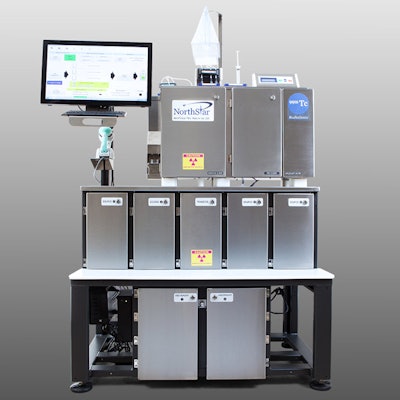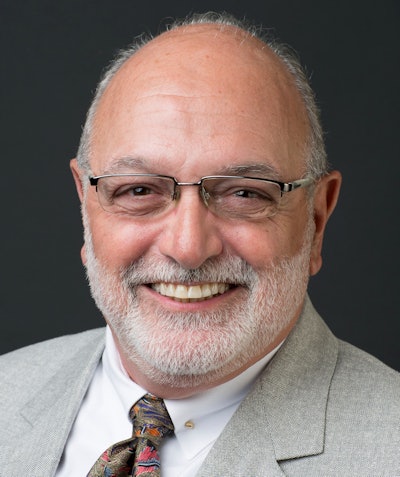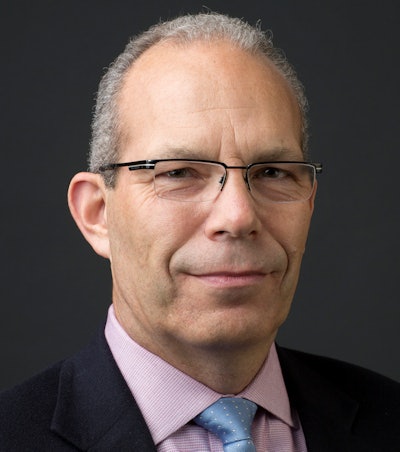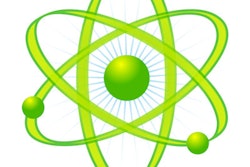
NorthStar Medical Radioisotopes is hoping that its isotope separation technology -- almost a decade in the making -- can alleviate worries about inadequate sources of molybdenum-99 (Mo-99), the precursor to technetium-99m (Tc-99m), a widely used radiopharmaceutical for nuclear medicine scans.
The company recently received clearance from the U.S. Food and Drug Administration (FDA) for its RadioGenix isotope separation system designed to generate sterile sodium pertechnetate Tc-99m from Mo-99. What separates the system from other technology is the absence of radioactive uranium.
 George Messina, NorthStar chairman, CEO, and founder.
George Messina, NorthStar chairman, CEO, and founder."Our material is as safe as a rock in the garden. Second, our technetium-99m is the same as what is in the [current] market," said George Messina, chairman, CEO, and founder of NorthStar. "We are looking to get into the market, and we believe that we will have a positive impact on patients and users."
'Keys to the kingdom'
Messina recalled seeing the RadioGenix technology for the first time in 2002. Soon thereafter he acquired an exclusive license for the technology from its designer, PG Research Foundation, and hired James Harvey, PhD, as chief science officer. By 2009, shortages of Mo-99 began to cause worldwide concern within the nuclear medicine community.
"Jim came into my office and said, 'We have the keys to the kingdom here,' " Messina told AuntMinnie.com. "He walked me through how we could essentially develop both the methodology of producing molybdenum-99 without uranium and eliminate nuclear proliferation that was a big concern to everyone."
For seven years, NorthStar also partnered with the Department of Energy's National Nuclear Security Administration (NNSA) to develop the RadioGenix system and the company's neutron-capture, uranium-free process for producing Mo-99.
The technology is considered a major step forward in reducing the U.S.'s complete dependence on foreign sources for Mo-99, some of which use highly enriched uranium (HEU) in their production. It also follows the American Medical Isotopes Production Act (AMIPA) of 2012, which directed the NNSA to eliminate the use of weapons-grade uranium in Mo-99 production to reduce the global nuclear proliferation threat.
 Waste from NorthStar's RadioGenix is benign because there is no uranium.
Waste from NorthStar's RadioGenix is benign because there is no uranium.To that end, the NNSA began to allocate up to $25 million in matching funds for commercial businesses to develop solutions. The agency is also working with Shine Medical Technologies to develop an accelerator technology to produce Mo-99 with low-enriched uranium (LEU) fission. It is also partnering with General Atomics, the University of Missouri Research Reactor (MURR), and Nordion to produce fission-based Mo-99 from an LEU target using selective gas extraction (SGE) technology.
In addition, the FDA offers a platoon of senior scientists in physics, microbiology, engineering, and pharmacology to advance these types of projects.
"The FDA is technology-neutral," Dr. Louis Marzella, PhD, director of the Division of Medical Imaging Products in the FDA's Center for Drug Evaluation and Research, told AuntMinnie.com. "We want to make sure that whatever technology is developed can reliably and consistently result in a product which meets our standards for both microbiology and pharmacological quality."
The rumor mill
The FDA's clearance of NorthStar's technology acknowledges two facts: The Tc-99m produced from RadioGenix is generic, and the isotope is identical to currently available uranium-based tracers.
 James Harvey, PhD, NorthStar's chief science officer.
James Harvey, PhD, NorthStar's chief science officer.Despite that validation, Messina takes exception to "some backroom talk about our molybdenum-99 not being as pure, nor does it have the same level of activity as current producers. That is absolutely untrue. Our technetium-99m is identical to our competitors' technetium-99m in every way."
The current conventional fission process for producing Mo-99 uses uranium and neutrons to yield approximately 6% Mo-99. The remaining 94% is in the form of other isotopes, Harvey explained. Those isotopes include iodide and xenon, which are useful, but more than 80% of the radioactivity from the fission process is waste.
Because the RadioGenix process uses no uranium targets in its production, residual waste is "extremely benign," Harvey said.
"In our case, greater than 98% of the radioactivity that is produced is all molybdenum-99," he said. "It meets the European Pharmacopoeia requirements for molybdenum-99 and uses this molybdenum-99 to produce U.S. Pharmacopeia-complying technetium-99m in the same activity concentration that nuclear pharmacists are using in their pharmacies today from the current old-style generators."
From here to there
NorthStar currently makes Mo-99 in Columbia, MO, where it collaborates with MURR researchers. The RadioGenix equipment and accessories are manufactured at the company's headquarters in Benoit, WI.
"We ship the RadioGenix and the equipment that is needed to run the RadioGenix from Wisconsin to a pharmacy," said Stephen Merrick, NorthStar's chief operating officer. "The source vessel [with Mo-99] goes from Columbia to the radiopharmacy, where they can generate the technetium."
The next steps in the company's business plan are to negotiate contracts with the approximately 350 radiopharmacies across the U.S. and work with them to obtain the necessary licenses to house RadioGenix equipment. NorthStar plans to work with the users directly, as well as with specialized distributors. Merrick noted the specialized nature of the radiotracer distribution network, with players like Cardinal Health, Triad Isotopes, GE Healthcare, and United Pharmacy Partners.
 Stephen Merrick, NorthStar's chief operating officer.
Stephen Merrick, NorthStar's chief operating officer.In fact, NorthStar has already signed Mo-99 supply agreements with GE and Triad.
"We have RadioGenix systems ready to go; we have production capacity. By the end of this year, we would certainly have the ability to fulfill approximately 10% of market demand," Merrick predicted.
In light of the off-and-on production issues as well as the planned and unscheduled nuclear reactor shutdowns around the world, NorthStar hopes its contribution will seriously mitigate isotope shortages.
Harvey attended a meeting of the Organization for Economic Cooperation and Development (OECD) in Paris in late January. The OECD is one of many global entities that follow the molybdenum situation.
At the time, NTP Radioisotopes' Pelindaba nuclear facility in South Africa was offline; it resumed Mo-99 production in February. The Open Pool Australian Lightwater (OPAL) nuclear reactor also went dark for five days for maintenance in January.
"That produced a shortage of 10% to 15% worldwide in the market of approximately 2,000 Ci per week at its worst case," Harvey said. "So there are still shortages; there is still a tenuous situation in the market that needs to be monitored very carefully."
How might NorthStar help in this regard?
"We have a ramp-up plan over the next few years, which would allow us to serve as much as two-thirds of the [U.S.] market," Merrick said. "In case of emergency, we can actually meet the whole market demand."
Beyond the current FDA-approved use for RadioGenix, NorthStar potentially could adapt the technology for therapeutic isotopes, such as actinium-225 and bismuth-213. If so, the company would need to return to the agency for additional clearances.



















